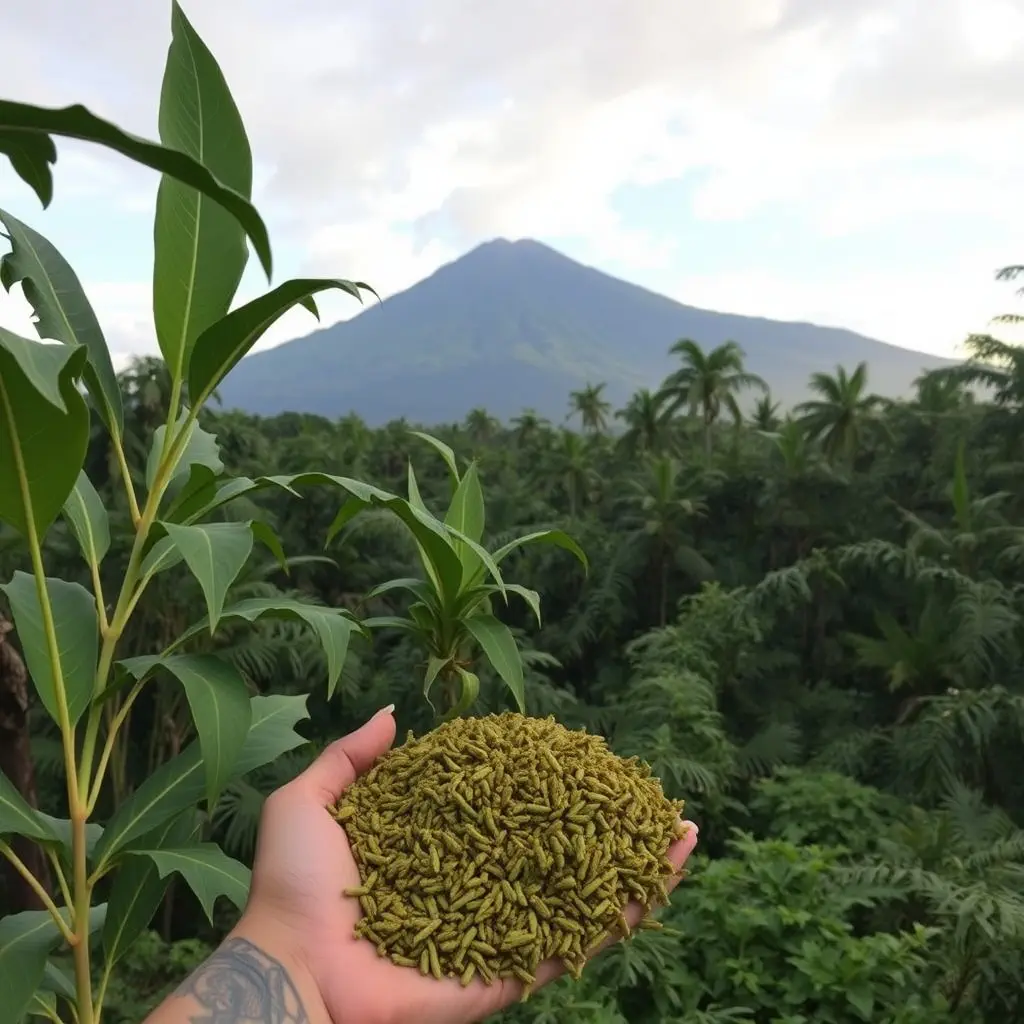Kratom, a Southeast Asian plant traditionally used in folk medicine for its stimulating effects, has gained international attention as a natural alternative to synthetic stimulants. Its leaves contain alkaloids like mitragynine and 7-hydroxymitragynine, which can affect brain opioid receptors to potentially enhance energy levels, reduce fatigue, and provide pain relief. While its use as an energy booster is popular, kratom's status as a regulated substance in many places, including military institutions, raises questions about military testing policies for it, given its impact on cognitive performance and the need to ensure occupational safety and compliance with drug regulations. The scientific community is actively researching kratom's effects to better understand its role in wellness practices, but the plant's legal variations across different regions, including within the U.S., where the Food and Drug Administration has expressed concerns about its safety, necessitate careful consideration by military personnel who may be subject to drug testing that includes kratom. The military must balance the potential benefits against the risks to maintain the health, well-being, and operational readiness of its service members.
Exploring the natural realm for energy boosters often leads to the intriguing plant, kratom. This article delves into the efficacy of kratom as an energy enhancer and its growing role within various sectors, with a particular focus on military applications. We will uncover how kratom operates within the human body to provide a boost in energy levels, assess the implications of its use within military testing policies, and examine the controversies surrounding this potent natural substance. Does the military test for kratom? The answers may surprise you as we navigate the complex relationship between natural supplements and regulated military environments. Join us as we investigate the intricacies of kratom’s potential as a natural energy booster and its implications across different domains.
- Unveiling the Potency of Natural Energy Boosters: An Overview of Kratom and Its Uses
- Kratom's Role in Energy Enhancement: Understanding Its Mechanisms and Effects
- The Military, Kratom, and Testing Policies: A Closer Look at the Implications and Controversies Surrounding Kratom Use in Military Personnel
Unveiling the Potency of Natural Energy Boosters: An Overview of Kratom and Its Uses

Kratom, a tropical deciduous tree native to Southeast Asia, has garnered attention across the globe as a natural energy booster. The leaves of this plant contain alkaloids, such as mitragynine and 7-hydroxymitragynine, which have been the subject of interest due to their stimulating effects. Traditionally, indigenous communities in regions where kratom is indigenous have used its leaves for centuries to enhance energy levels, increase productivity, and manage pain. The plant’s efficacy in these areas has led to a surge in its popularity as a natural alternative to synthetic energy boosters.
In the realm of energy enhancement, kratom stands out due to its unique alkaloid composition. When ingested, these compounds interact with opioid receptors within the brain, triggering a cascade of physiological responses that can lead to increased alertness and sustained energy levels. While some have questioned whether military institutions test for kratom given its potential to affect cognitive functions and its status as a controlled substance in several countries, its natural origins and comparatively lower risk profile compared to many other substances make it an appealing option for those seeking a natural lift without the jitters or crash associated with caffeine or other traditional stimulants. The use of kratom as a natural energy booster continues to be explored, with ongoing research attempting to elucidate its full spectrum of effects and potential applications within wellness routines.
Kratom's Role in Energy Enhancement: Understanding Its Mechanisms and Effects

Kratom, a tropical evergreen tree native to Southeast Asia, has garnered attention in various circles, including those exploring natural energy boosters. Its leaves contain alkaloids that can have stimulant or sedative effects, depending on the dose. When consumed in lower doses, kratom is known to promote alertness and stamina due to its stimulatory properties. The primary active components, mitragynine and 7-hydroxymitragynine, interact with the body’s opioid receptors, which can enhance energy levels and reduce fatigue. This interaction triggers a cascade of neurochemical responses that may increase the release of dopamine and norepinephrine, neurotransmitters associated with feelings of well-being and heightened alertness.
The role of kratom in energy enhancement is multifaceted, influencing both mental acuity and physical endurance. Its stimulant effects are often sought after to counteract the sensation of tiredness or lethargy. Users may experience a sense of euphoria, increased focus, and a burst of energy, which can be particularly beneficial for individuals looking to augment their productivity levels. However, it’s important to approach kratom with caution, as its effects can vary significantly between individuals, and the regulatory status surrounding its use is subject to change. Additionally, the interaction between kratom and other substances or medications should be carefully considered, especially in sensitive populations such as military personnel, where drug testing protocols may include kratom. Does the military test for kratom? This question is pertinent given the increasing scrutiny of alternative substances in professional settings and among athletic groups. Users are advised to stay informed about the legal status of kratom in their jurisdiction and to consult with healthcare professionals before incorporating kratom into their regimen for energy enhancement.
The Military, Kratom, and Testing Policies: A Closer Look at the Implications and Controversies Surrounding Kratom Use in Military Personnel

The use of natural energy boosters in military personnel has been a topic of considerable debate, particularly with the emergence of kratom as a potential alternative to traditional stimulants. Kratom, derived from the leaves of Mitragyna speciosa, has gained attention for its alkaloid content, which can provide both stimulant and opioid-like effects. The implications of its use within the military are multifaceted, touching upon issues of performance enhancement, pain management, and the potential for abuse or dependency. Does the military test for kratom? This question is at the heart of ongoing discussions regarding the enforcement of testing policies. While the military has stringent policies to detect performance-enhancing drugs, kratom’s position as both a herbal supplement and a controlled substance in some regions adds complexity to these tests. The variability in legal status across different states and countries complicates matters further, leading to inconsistent application of rules within the military community, especially for those serving abroad or stationed in areas where kratom is legally available.
The controversies surrounding kratom use in military personnel are not solely related to its detection in drug tests but also encompass broader concerns about its safety and efficacy. The U.S. Food and Drug Administration (FDA) has issued warnings about the risks associated with kratom, including potential side effects and interactions with other substances. This raises questions about the wisdom of introducing such a compound into the regimen of military members who may already be dealing with the psychological and physiological stressors of service. The testing policies within the military are evolving to address these concerns, with ongoing research and updates to regulations aimed at protecting the health and well-being of service members. As the scientific community continues to study kratom, the military must carefully consider its stance on this substance, balancing the need for alert and capable personnel with the imperative to safeguard their health and integrity.
In conclusion, natural energy boosters like kratom present a compelling alternative for those seeking an enhancement in their energy levels. The potential of these substances, as outlined in our exploration of their mechanisms and effects, offers a window into the broader category of natural remedies. However, the implications and controversies surrounding kratom’s use, particularly within military contexts where policies continue to evolve, underscore the need for cautious consideration and further research. As the discussion on whether the military tests for kratom continues to be a focal point in policy development, it is clear that understanding the nuances of this plant is critical for informed decision-making in both civilian and military spheres. The overview provided herein highlights the complexity of integrating natural energy boosters into everyday practice while also addressing the immediate concerns regarding their presence in testing protocols.






